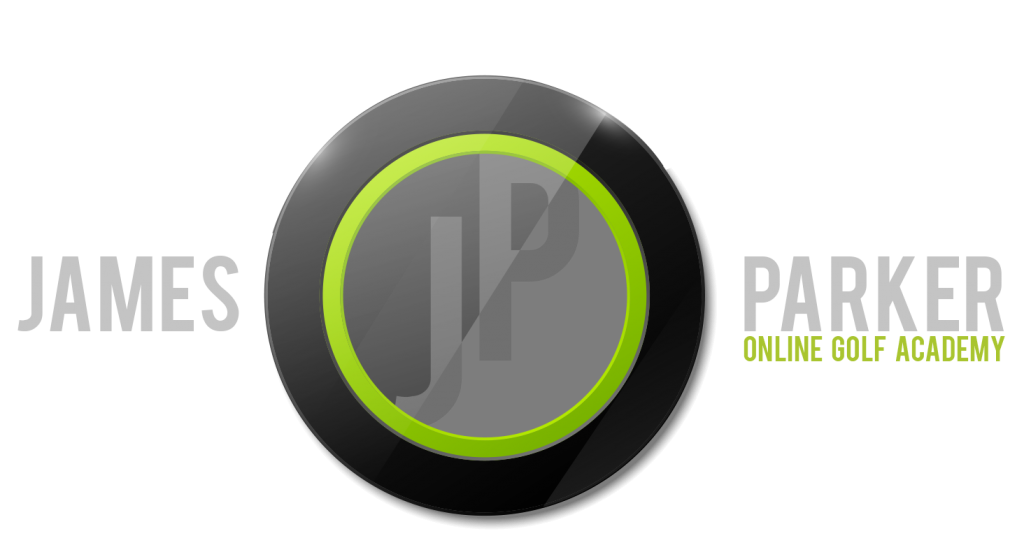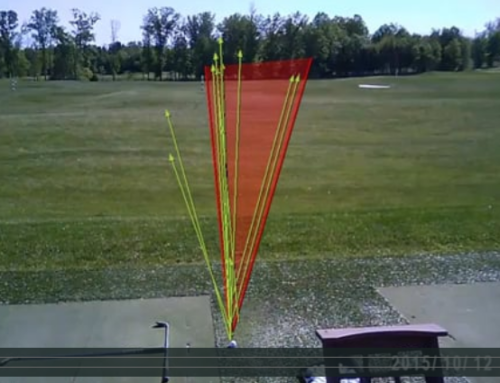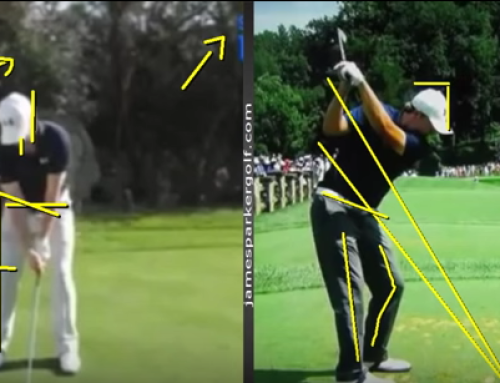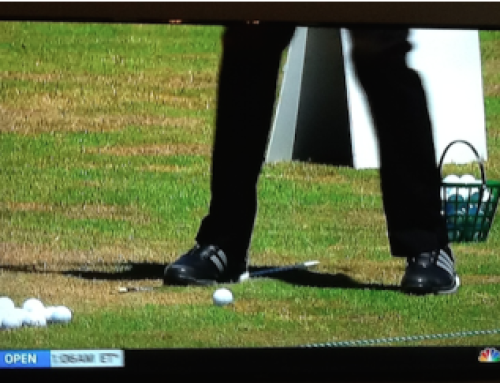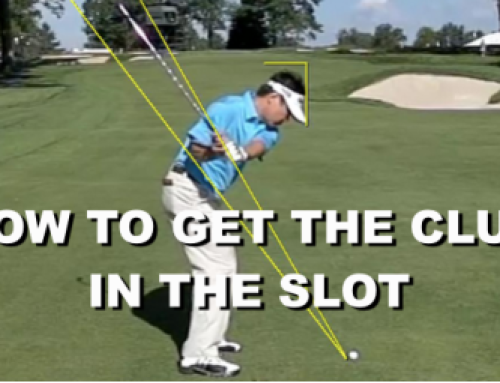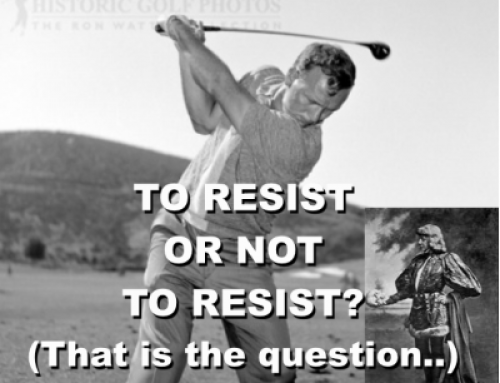Project Description
There are seven pressure points in the golf swing that essentially hold and attach all the moving parts together.
The best way to look at these essential pressure points is by imagining them as the nuts and bolts that attach one part to another.
For example:
– Your HANDS attached to the CLUB..
– Your ARMS attached to your BODY..
– Your FEET attached to the GROUND..
Let’s start with how your hands should be attached to the club.
The first Pressure Point (PP#1), is the heel (or lifeline) of your right hand against your left thumb.
If you release your bent right wrist condition coming down too early (club head throwaway), you’ll also lose PP#1.
DRILL: Place a tee peg in between the heel pad of your right hand and your left thumb. Start with short slow swings, concentrating on keeping the tee peg in between your hands during the move. This will help keep your right wrist BENT through impact, which is essential.
The second pressure point (PP#2), is the last three fingers of your left hand (top hand).
These three fingers keep the club clamped or attached to the left hand during the swing. If the club were to come away from the last three fingers of the left hand at any time during the swing, the cocking and un-cocking (hinging/unhinging) is generally affected in the downswing. This means the club loses the necessary LAG, and the club-head outraces the hands before impact.
DRILL: Squeeze the club with the last three fingers of the left hand tighter than normal to increase your attention in that area. Start short and slow, making sure your left wrist remains cocked until you pull your hands down in front of your right thigh (downswing). In this position, the club should be parallel with the ground. From here to impact, move slowly and deliberately down through impact focusing on the un-cocking of the left wrist with the last three fingers still clamped to the club. The correct feeling will involve a “bowing” and un-cocking action in the left wrist.
Once you have trained your left wrist to operate in this fashion, start squeezing the club a little lighter. But make sure the last three fingers are still clamped/attached to the club.
The third pressure point (PP#3), is the first joint of the right hand trigger finger against the side of the handle.
The sensation in this part of the right hand is essential to understanding LAG and moving the club up and down the inclined plane line. Many people don’t even know about this essential pressure point because they don’t place their hands on the club correctly to begin with. Make sure you’re not one of them!
DRILL: Get yourself what I call a “trigger finger educator” (aka a Pure Ball Striker)

This will help you sense the DRAG and LAG in your downswing by educating your right hand and wrist. The idea is to deliver the club to the ball with a bent right wrist.
The fourth Pressure Point (PP#4), is the left arm attachment to the torso.
This is essential for the swinging sensation during the move. Or another way of describing it might be the pulling sensation in the left side of the body during the downswing. Without the left arm applying pressure to the torso, the torso might be turning coming down but the left arm will not follow it. Therefore it’s essential that a form of pressure is applied under the left armpit to allow the body to lead the arms coming down, and the left arm to be pulled along, and accelerate down past the body.
DRILL: Place a tee peg under your left armpit and start with short slow swings. Pay close attention to the natural pulling motion in the left side of the body on the way down and how this pressure point pulls the left arm down and through impact.
The fifth Pressure Point (PP#5), is the right arm attachment to the torso.
Again this is essential for the pushing/driving/hitting element to the swing. Just as the left side of the body should be pulling. The right side of the body should be pushing.
During the kinematic chain of movements of the downswing – where the lower body moves the upper body, which moves the arms, which moves the club, the driving of the right shoulder is essential. If PP#5 is not maintained, the right arm, and therefore the right hand and wrist will tend to throw the club during the downswing. Again causing club-head throwaway. Meaning the club-head will outrace the hands too soon before impact.
DRILL: Again place a tee peg or old glove under your right armpit. Start with short and slow swings, feeling a driving or pushing sensation with the right shoulder and arm. If you maintain PP#5, you’ll find yourself in a much better impact position with a bent right arm and wrist which delivers the shaft leaning forward.
NOTE: This PP#5 will not be possible for everyone. Especially if you struggle to externally rotate your right arm.
The sixth Pressure Point (PP#6), Is the left foot against the ground.
This pressure point is essential to balance. Start with a little more weight on this foot to start with and gradually increase the weight into this foot during the move. The best balanced swings are the ones with very little left foot roll. Meaning, although the weight moves to the outside of the left foot to finish, We want to try and do this with little foot roll.
DRILL: Imagine there is a tee peg balancing on your left foot. Start short and slow, starting the downswing by applying more pressure under the left foot (try and squash the tomato) but try and imagine the tee peg is still standing when you reach your finish position.

The seventh Pressure Point (PP#7), is the right foot against the ground.
Although the right foot comes off the ground during the downswing and through swing. The more attached to the ground we can keep it during the backswing, the better your move will be.
Many amateurs roll their weight onto the outside of their foot during the backswing. This not only affects balance, but also promotes a swaying or lateral action with the body. Namely, the hips and head. Not a good idea if we want a centered golf swing.
Although we want to increase the weight under the left foot during the move. The pressure under the right foot is equally important. Instead of thinking about shifting the weight from side to side (ala old fashioned coaching methods). It’s more beneficial to think of the pressure under the feet.
During the backswing the right leg should straighten a little to allow the hips to function properly. I.E the right hip and tailbone moving closer to the target.
During this straightening, the pressure under the right foot increases greatly.
DRILL: To stop any right foot roll in the backswing, place a stick or box just outside your right foot. Then focus on moving your right hip and tailbone towards the target, eliminating any roll to the outside of the foot.
Watch this video to understand a little more… Click here
SUGGESTIONS…
Get yourself a training club and practice working on these pressure points in the comfort of your own home. Once you become more knowledgeable about the swing, it’s really all about putting the reps in to ingrain the muscle memory.

